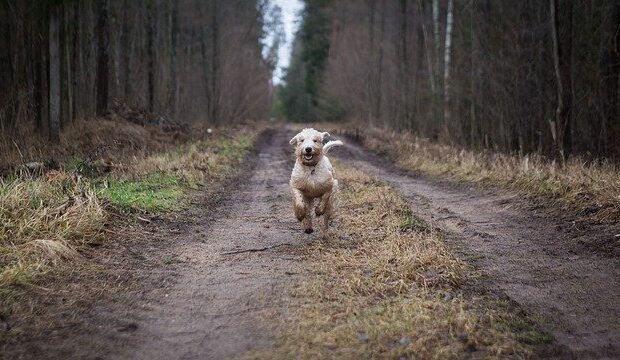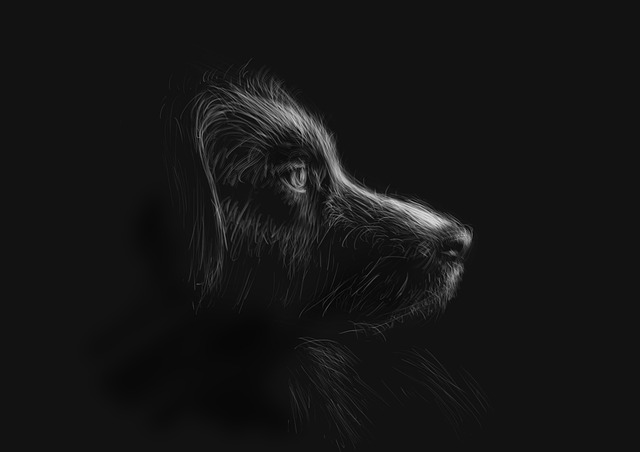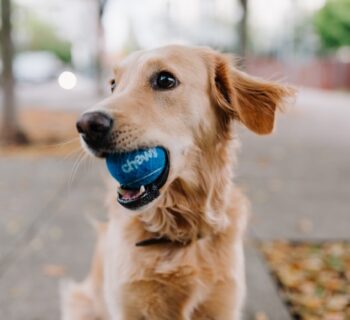Taking a walk with your pet might quickly derail if a loose or uncontrolled dog approaches you. If an off-leash dog approaches you while you are walking your dog, you have no idea how your dog will react. As a responsible dog owner, you must learn how to take charge of your surroundings and handle unforeseen events while walking your dog on a leash. Off-leash dogs aren't always a bad thing, but it's up to the dog owner to determine if he or she wants to interact with the dog approaching.
Table of Contents
Take Your Dog for a Walk in the Right Place
In order to ensure the safety of both your dog and those around you, it's important to remember that leash rules are in place. If you want to let your dog run free, please do so in an off-leash area that your city has designated. Off-leash parks allow dogs to mingle with their canine companions and the people that visit the park. Assuming that a canine is generally obedient when off-leash does not indicate that every other dog they come across will reciprocate.
Always pick a place where your dog will feel comfortable and where he will learn best. Dogs that are easily scared or display aggressive tendencies toward other dogs should be avoided in high-traffic locations where off-leash dogs are present, as well as areas with a lot of other dogs. In an off-leash park, your dog may encounter other animals, so keep an open mind when taking your pet there. This is not the place for your dog if they are not tolerant of other animals.
Dog owners are responsible for removing their pets from areas where they feel uncomfortable or unsafe, even if other owners are flouting the law. Avoiding an attack is always preferable to intervening in one already underway.
Good Walking Habits Can Be Taught
In the event that you need to quickly instruct your dog, teaching your dog good walking habits will be a lifesaver. The ability to rely on a well-trained dog when making quick decisions is an invaluable asset. To avoid a potentially deadly situation, you should first place your dog behind you and guide it out of harm's way.
Tips for Dealing With a Dog That Approaches
Keep an Eye on Your Dog
Keep a close eye on your dog's body language and clues. Your dog will notice an unusual dog before you are even aware of it. You must respond immediately if your dog's body language changes. If your dog shows signs of fear or hostility, it is best for you to walk away. If your dog has a history of being leash reactive, it's best to avoid a fight by heeding the warning signs of excitement and hostility.
Keep Your Head up and Carry On
Any tension or fear you feel will be picked up by your dog. Maintaining your composure will benefit both you and your dog in this situation. If you're just getting started, it's best to move and speak gently and softly, at least in the beginning.
Keep your feet on the ground. Running can elicit a charge from the oncoming dog and heighten tensions for everyone concerned. To avoid scaring your dog or scaring the approaching animal, walk away calmly. Territorial behaviors benefit greatly from this strategy.
Turning your back on an approaching dog may not always be the best option, especially if they are acting aggressively. Keeping the other dog in your peripheral view but still directing your dog away, try to walk away at a 90-degree angle.
Attempt to Guide the Dog Vocally
Make use of some broad vocal commands as you get closer to the dog to guide it away from you. ''Sit'', ''remain'', or ''go'', uttered in a low, serious tone, may be enough to bring the dog to a halt long enough for you and your dog to escape or for the dog's owner to arrive and intercede.
Both dogs may become fearful if you scream or act aggressively against them. Ask the questions with authority. A friendly or unsure dog may respond to your directions, while an aggressive or territorial dog may not, depending on its training.

Distract With Treats
Doggy treats are always a nice idea to have on hand. In addition to directing your dog, you can hurl some of them at an oncoming dog. This way, you may be able to get away from the location without being confronted. Dispose of the snacks far enough away from your dog so that he is not drawn in.
This is very likely to work if you have a friendly dog because they are readily distracted. This ploy could fool even an aggressive dog. Multiple treats may be necessary to keep them occupied, and you can even try throwing some behind them to get them to back up or turn around.
Identify a Physical Obstacle
If the preceding methods don't work, you may need to construct a physical barrier between you and your dog and the approaching dog. Both of you could be protected if you had a fence, a car, or whatever else you might have. Carrying an umbrella is a simple way to avoid getting caught in the rain. Opening the umbrella and using it as a barrier could dissuade the other dog from making a second attempt, even if it scares them away.
It's natural for owners of little dogs to grab their dogs to protect them instinctively, but this is a bad idea. Picking up your dog may cause an approaching dog to attack you. It will be impossible for your dog to protect itself or escape away from you while it is in your arms. The only time you should pick up your dog is if you are able to position them somewhere that the other dog cannot reach, such as on top of a car or over a fence.
About the Author
Kirsten Heggarty
Kirsten created The Pet Handbook with the aim of sharing her knowledge about pets, pet food, healthy habits, and more. All of her advice is based on years of her own experience with her pets, and feedback that she has received from grateful readers about her tips. If you want to know more please read the About Me page.









